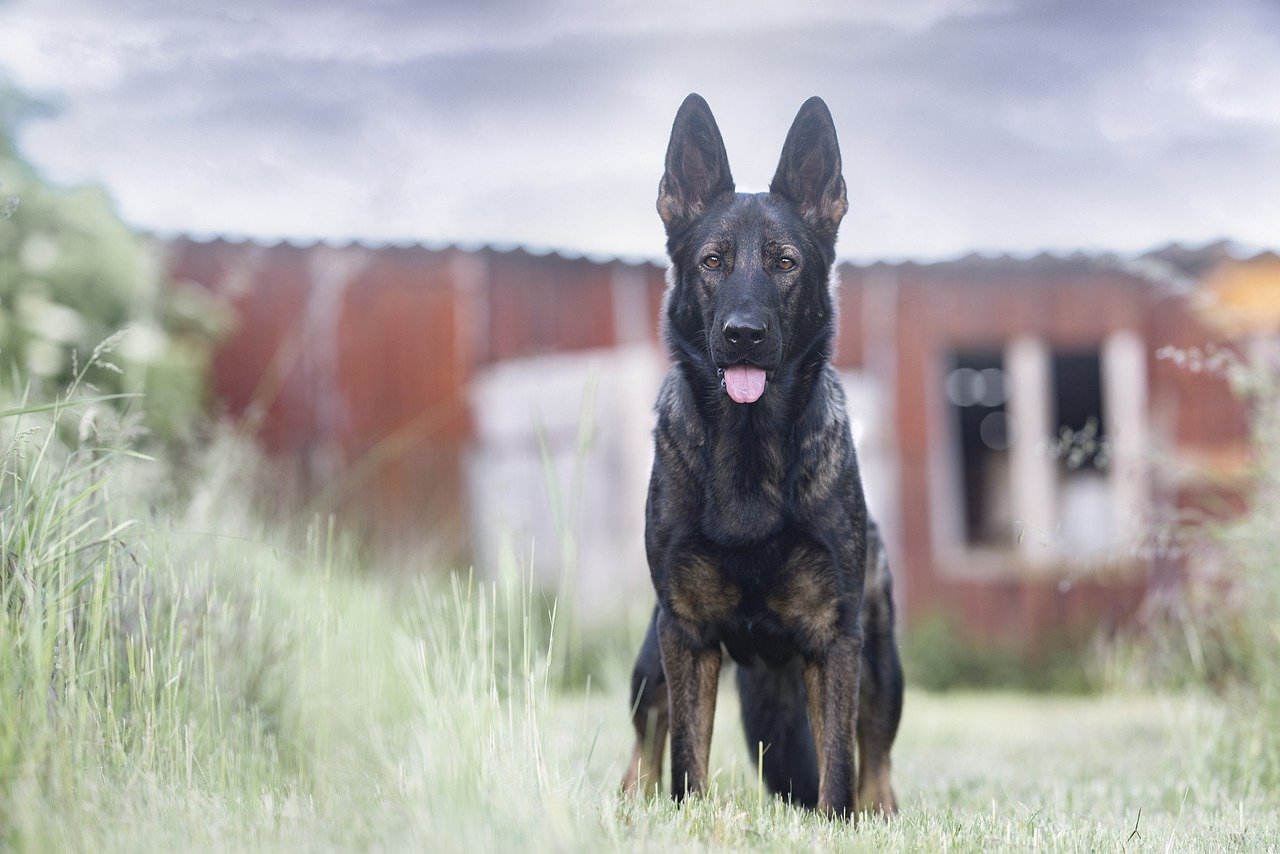German shepherds are known for their devotion to their owners and high energy. However, are you aware that they are many types of German shepherds? However, in this post, we’ll focus on DDR GSDs. So, what is a DDR German shepherd?
DDR German Shepherds are dogs that were developed during the Cold War by East Germany’s military canine development projects. The DDR developed a specimen with fewer health hazards, more athletic potential, and exceptional intelligence as a result of severe training and tight breeding regulations. They are also known as East German DDR working line German shepherds.
Contents
Origin of DDR German Shepherds
Around the 1940s, the East German shepherd’s reign began. This dog began his career as a border patrol dog in East Germany. They chose these canines because of their working ability and strong activity levels.
This dog breed aided the army and the police department during World War II; they served as messengers and fended off invaders. Such characteristics increased the popularity of this dog breed.
However, after World War II, the worst was yet to come: the Cold War.
During this time, Germany was divided into two parts: East Germany, also known as the Deutsche Demokratische Republik( DDR), and West Germany, also known as the Federal Republic of Germany.
These canines guarded the high Berlin wall as border patrol dogs. They became more famous during this period because of their resistance to extreme temperatures, ability to scale great heights, and tremendous biting pressure.
From then on, the East German communist party was in charge of all DDR German shepherd breeding regulations and procedures. They didn’t want their West German rivals to outperform them, therefore breeding requirements were raised again and again.
As a result, the DDR German shepherd’s build, temperaments, and work ethic were some of the issues that this communist party focused on. Canines with hip and elbow dysplasia, as well as low-energy dogs, were not allowed to breed.
The downfall of the DDR German shepherds
In 1989, West and East Germany merged. As a result, the huge demand for DDR German shepherds had to decrease. There were no more 6-foot walls to scale or invaders to chase. As a result, this dog breed was on the verge of extinction. Some of these dogs were euthanized, others were abandoned, and still, others were sold for a pittance. The DDR, on the other hand, was saved from extinction thanks to several breeders’ concerted efforts.
Physical Appearance of the DDR German Shepherds
The DDR German Shepherd is a medium to large dog with a balanced stance and a muscular build. DDR German Shepherds’ entire look reveals their general personality – robust, agile, and well-mannered.
DDR German Shepherds have a muscular, curve-filled frame. This gives their silhouette a curved rather than a sharp-angled appearance.
The upper line of a DDR Shepherd is slightly straighter than that of a typical GSD. As a result, their backs are not as slanted as those of regular German Shepherds.
DDR dogs have double-layered medium-length coats that protect them from the weather. These dogs are usually black or sable in color. They might have straight or wavy coats.
An East German Shepherd’s tail is bushy, comparable to a regular German Shepherd’s. Their tails dangle downwards between their hindquarters while they are at rest.
DDR German shepherds Temperament
DDR German shepherds are noted for their kind nature, calm temperament, and work ethic. They are bred to be self-assured and courageous, qualities that are necessary for the type of work they will be doing.
Furthermore, if not effectively trained, these dogs might develop negative habits as a result of their tremendous activity.
Are DDR German shepherds recognized by Kennel Clubs?
The DDR German Shepherd is not a recognized breed in its own right. It is merely a German Shepherd breed variation named by its special qualities as a guard dog as well as its origin.
However, most kennel associations’ breed standards make no mention of “DDR German Shepherds” or “East German Shepherds.”The American Kennel Club (AKC), the Fédération Cynologique Internationale (FCI), the Canadian Kennel Club (CKC), and the United Kennel Club (UKC) all have breed standards (UKC).
Furthermore, the largest German Kennel Club, the Verband für das Deutsche Hundewesen (VDH), does not include the DDR German Shepherd in its breed criteria.
This is not to mean, however, that kennel clubs do not acknowledge DDR dogs.
Because these working dogs are German Shepherds at their core, they are still suitable to be registered with any kennel club as long as they meet the requirements.
DDR German shepherd Puppies
The price of a DDR German shepherd dog breed varies.
The pedigree, the dog’s proven abilities, and the location are examples. A DDR German shepherd puppy costs $500-$2000. This price can even exceed the worth of the dog breed.
A puppy purchased from a breeder is often far more expensive than one adopted from a shelter.
DDR German shepherds Life Span
DDR German Shepherds live 12-13 years, which is similar to most German Shepherds. Importantly, DDR GSDs tend to live longer than non-DDR GSDs.
Conclusion
That’s all there is to the DDR GSD; it’s a high-energy working dog that enjoys an active household. If you’re lucky enough to own one, you’ll attest to its good manners and determination.
